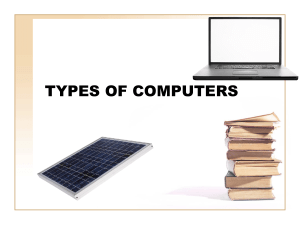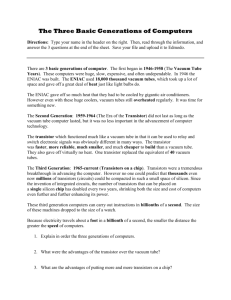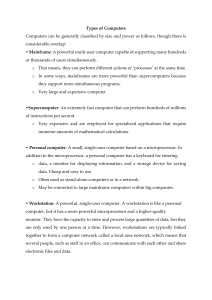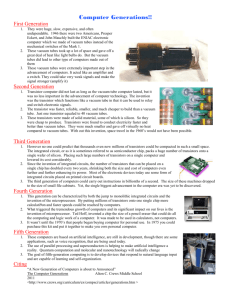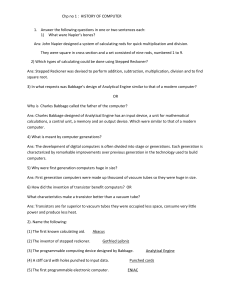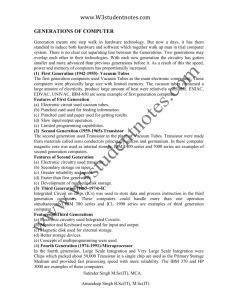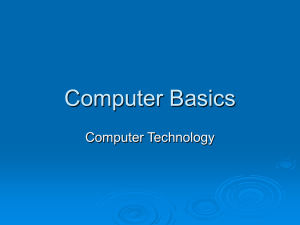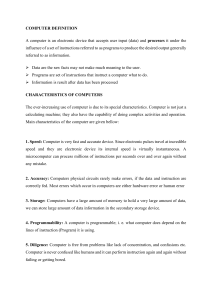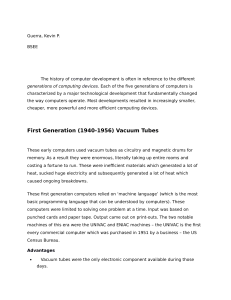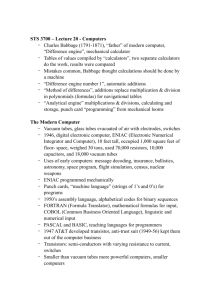Generation of computers
advertisement
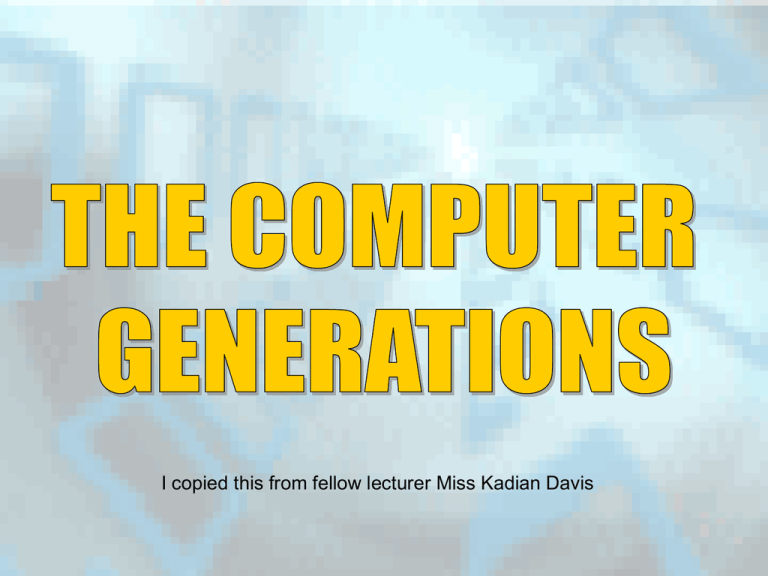
I copied this from fellow lecturer Miss Kadian Davis ZEROETH GENERATION • Man used his fingers, ropes, beads, bones, pebbles and other objects for counting. •Abacus, Pascaline, Difference & Anylitical engines •Electricity was not yet invented FIRST GENERATION, 1951 – 1958: The Vacuum Tube • The first generation of computers, characterized by vacuum tubes, started in 1951 with the creation of UNIVAC (Universal Automatic Computer) – a tabulating machine which won the contest for the fastest machine which could count the US 1890 census. VACUUM TUBES – electronic tubes about the size of light bulbs. DISADVANTAGES: • They generate more heat causing many problems in temperature regulation and climate control. • Tubes were subject to frequent burn-out. SECOND GENERATION, 1959 – 1964: The Transistor The year 1959 marked the invention of transistors, which characterized the second generation of computers. TRANSISTOR – was a three-legged component which shrunk the size of the first generation computers. Occupied only 1/100th of the space occupied by a vacuum tube More reliable, had greater computational speed, required no warm-up time and consumed far less electricity. THIRD GENERATION, 1965 – 1970: The Integrated Circuit Third generation computers arose in 1965 with the invention of smaller electronic circuits called integrated circuits (IC’S) INTEGRATED CIRCUITS – are square silicon chips containing circuitry that can perform the functions of hundreds of transistors. ADVANTAGES: • RELIABILITY – Unlike vacuum tubes, silicon will not break down easily. It is very seldom that you will have to replace it. • LOW COST – Silicon chips are relatively cheap because of their small size and availability in the market. It also consumes less electricity. FOURTH GENERATION, 1971 – present: The Microprocessor • Marked by the use of microprocessor • MICROPROCESSOR – is a silicon chip that contains the CPU – part of the computer where all processing takes place. 4004 chip – was the first microprocessor introduced by Intel Corporation. TODAY’S COMPUTER • is classified as fourth generation computers. • faster, more powerful, tremendous data storage and processing capacity • new brands and models would come out the market almost every other month. • many clones or imitations of the IBM have become even more powerful and a lot cheaper. • computers became more affordable • computers can now be found in homes, schools, offices etc. • there has been a tremendous improvement in software technology • different software applications to choose from: word processing, spreadsheets, database management, games and entertainment. • computer subjects are now being offered not just to college students but even to high school and elementary. • computers are now used as an aid in teaching math, science etc.
